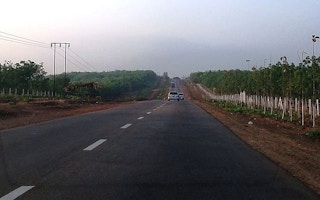Community and conservation groups in Myanmar have branded a planned highway linking a port project to Thailand an “ecological and social disaster”, saying it would uproot indigenous people from their homes and farms.
Critics said an environmental and social impact assessment for the road project, approved by the Myanmar government in June, failed to adequately specify compensation for loss of land and livelihoods, among other problems.
“This is a road to an ecological and social disaster (in Myanmar),” said Christy Williams, Myanmar director for the World Wide Fund for Nature (WWF), an international conservation group.
The highway is considered strategically important to both nations as it would link Thailand to a deep-sea port and planned Special Economic Zone (SEZ) in Dawei, a town on the Myanmar side of an isthmus divided between the two countries.
The industrial complex would serve as a gateway to Southeast Asia’s markets, with goods trucked between Dawei and Thailand, avoiding the need for ships to sail southward through the Malacca Straights, the world’s busiest shipping lane.
But Williams said the planned road would pass through a region of “huge ecological importance with rich biodiversity”.
“
Our main concerns over the project are forced relocation of thousands of local indigenous people, potential industrial pollution …
Thant Zin, director, Dawei Development Association
The assessment looked only at the effects on people and the environment within 500m (550 yards) of the road, he added, but the impact will affect a much wider area.
He said WWF had been working with communities and provided “extensive recommendations and solutions” to the Myanmar government and Myandawei Industrial Estate Co. Ltd, the Thai firm developing the road and SEZ, but these had “been ignored”.
The impact assessment failed to address many issues brought forward by residents during consultation sessions, said Thant Zin, director of the Dawei Development Association, a local civil society group.
“Our main concerns over the project are forced relocation of thousands of local indigenous people, potential industrial pollution … land grabbing and livelihood issues, and human rights violations in project area,” he said.
A spokesman for Myanmar’s environment ministry did not respond to repeated requests for comment.
Gunn Bunchandranon, a spokesman for Myandawei Industrial Estate Co. Ltd, said the highway’s impact assessment was in line with the laws of both Myanmar and Thai.
He said people from affected communities who attended public consultations did not raise any concerns about compensation for loss of land.
However, a 2015 draft of the impact assessment provided by conservation group EarthRights International included the minutes of one such meeting where the land compensation question was raised.
Risk of conflict
Myanmar residents have also expressed fear that the highway could reignite conflict between the government and Myanmar’s oldest armed group, the Karen National Union (KNU), according to Ben Hardman of EarthRights International.
Those concerns did not make it into the impact assessment, Hardman said.
The KNU signed a ceasefire agreement with the military in 2012, ending six decades of fighting. In 2015 it signed a national ceasefire agreement (NCA), along with other armed ethnic groups.
But relations with the government remain tense and the KNU claims control over territory the highway would pass through.
Saw Tah Doh Moo, the group’s secretary general, said the NCA required that the KNU be consulted about any development projects in areas under its control.
However, neither the company nor the government have officially discussed the road project with them, he said.
“I don’t want to say what would happen, but it would undermine the NCA,” he told the Thomson Reuters Foundation by phone. “We have to think about how to respond.”
This story was published with permission from Thomson Reuters Foundation, the charitable arm of Thomson Reuters, that covers humanitarian news, women’s rights, trafficking, property rights, climate change and resilience. Visit http://news.trust.org)










